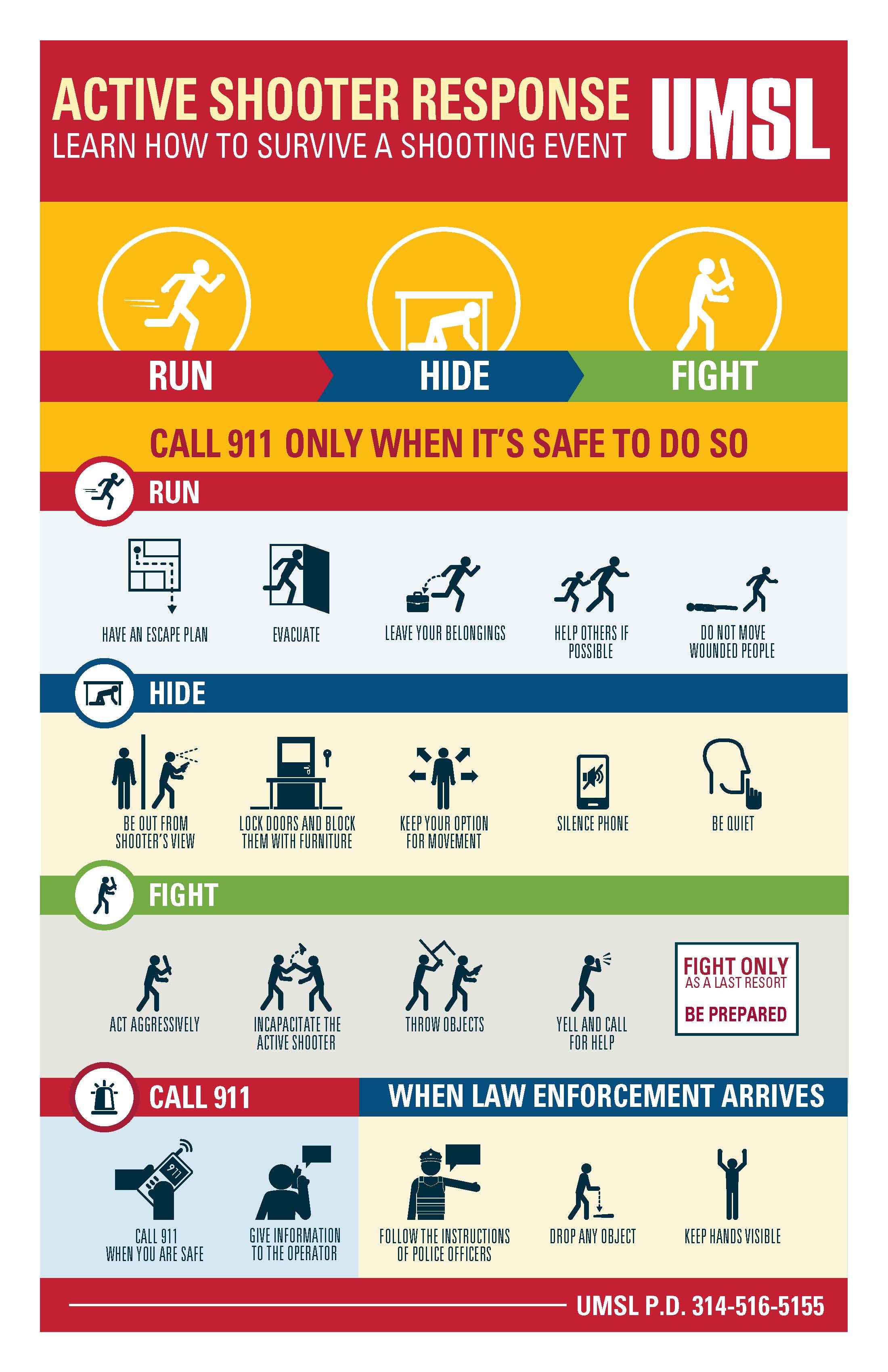The Benefits of Recurring Active Shooter Training for Neighborhood Defense
The Benefits of Recurring Active Shooter Training for Neighborhood Defense
Blog Article
The Important Duty of Energetic Shooter Training in Enhancing Emergency Reaction Strategies in Various Environments
Active shooter training has actually arised as an essential element in refining emergency situation reaction methods throughout diverse setups, from instructional institutions to company settings. The effectiveness of such training pivots on numerous variables, consisting of the details context in which it is implemented and the ongoing commitment to renovation.
Relevance of Active Shooter Training
In an era noted by boosting worries over public security, the significance of active shooter training can not be overemphasized. As events of gun physical violence in public rooms remain to rise, organizations throughout different sectorsâEUR" academic establishments, work environments, and public venuesâEUR" are acknowledging the necessity of preparing their personnel and communities for such emergencies. Energetic shooter training furnishes individuals with critical abilities and knowledge to react properly in lethal situations, potentially minimizing casualties and conserving lives.
The training not only concentrates on instant reaction activities, such as discharge and shielding in location, but also promotes a society of recognition and preparedness. By taking part in practical simulations and discussions, individuals can determine possible susceptabilities within their atmosphere and create approaches for mitigating dangers. Additionally, such training improves communication and coordination among employee and first responders, guaranteeing an extra unified approach throughout situations.

Secret Components of Effective Educating
Efficient active shooter training comprises several essential components that enhance preparedness and response capacities. Sensible scenario-based simulations are essential. These exercises submerse individuals in high-stress scenarios that imitate potential energetic shooter occasions, enabling them to exercise decision-making and physical actions under stress.
Additionally, training should include a complete understanding of interaction protocols. Individuals ought to be skilled in how to communicate vital information to police and fellow people during an occurrence. This consists of making use of emergency situation alerts and understanding the hierarchy.
An additional essential part is the incorporation of psychological health understanding. Training needs to resolve the mental effect of energetic shooter situations, equipping participants with coping techniques and resources to support their mental health post-incident.
Moreover, routine correspondence course are crucial to guarantee that skills continue to be sharp and knowledge is updated. This constant education and learning enhances the relevance of readiness and cultivates a society of safety within organizations.
Training for Various Environments
Energetic shooter training have to be tailored to the details atmospheres in which individuals operate, as each setting presents distinct challenges and characteristics. As an example, training in a business office will differ considerably from that in a school, shopping mall, or healthcare facility. Each setting necessitates a personalized approach that takes into consideration variables such as layout, populace density, and available getaway routes.
In universities, training programs should stress lockdown procedures, communication procedures with regulation enforcement, and techniques for safeguarding trainees. Conversely, in company setups, training may concentrate on emptying approaches, recognizing suspicious habits, and utilizing readily available sources for self-defense or shelter-in-place scenarios.
In addition, public locations like shopping malls or sporting occasions need comprehensive group administration approaches, with an emphasis on rapid feedback coordination among safety and security employees and local law enforcement.
In healthcare atmospheres, training must deal with details vulnerabilities, such as the presence of clients who might need prompt assistance. By recognizing the distinct characteristics of each atmosphere, companies can create reliable training components that boost readiness and improve overall safety, ensuring that people are equipped to respond properly in diverse situation circumstances.

Structure a Society of Recognition
Creating a culture of awareness is essential to improving precaution in any type of setting, as it empowers individuals to identify potential threats and respond proactively. This society demands continuous education and learning, open communication, and the assimilation of safety and security protocols into daily routines.
Organizations ought to prioritize energetic shooter training as component of their overarching safety and security approach, making certain here are the findings that all employees recognize the certain risks connected with their atmosphere. Normal training sessions grow caution and experience with emergency procedures, urging people to stay sharp to uncommon habits or conditions.
Additionally, fostering a culture of awareness includes developing an atmosphere where reporting questionable activity is both encouraged and normalized. active shooter best site training. Staff members need to feel comfortable sharing their problems without anxiety of retribution. This can be accomplished with clear channels of communication and supportive leadership
Furthermore, engaging in area collaborations can heighten awareness beyond organizational limits, promoting a shared responsibility for safety. Initiatives such as workshops, drills, and educational sessions can additionally improve cumulative alertness. Eventually, constructing a culture of recognition not only prepares individuals for possible crises but likewise strengthens the general resilience of the organization against hazards.
Assessing Educating Efficiency
While normal training sessions are essential for preparedness, assessing their efficiency is similarly vital to guarantee that personnel are furnished with the required abilities and knowledge to react appropriately in the event of an active shooter situation. Examination procedures should consist of both qualitative and measurable evaluations to gauge the effect of training on feedback capabilities.
Surveys and feedback from individuals can give valuable insights into the training's importance and applicability. Furthermore, conducting useful drills and simulations enables companies to observe real-time decision-making and team effort under stress. Assessing the results of these exercises aids identify staminas and locations for improvement.

Involving stakeholders, including law enforcement and emergency situation responders, in the evaluation process can enhance reliability and supply an extensive perspective on training efficiency (active shooter training). Ultimately, an organized examination strategy ensures that active shooter training continues to be an essential part of a company's emergency feedback technique, promoting a much safer atmosphere for all
Conclusion
Energetic shooter training is important in fortifying emergency response approaches across varied settings. Ultimately, the execution and assessment of reliable training programs contribute dramatically to alleviating the influence of energetic shooter scenarios, consequently safeguarding lives and improving neighborhood durability.
Report this page